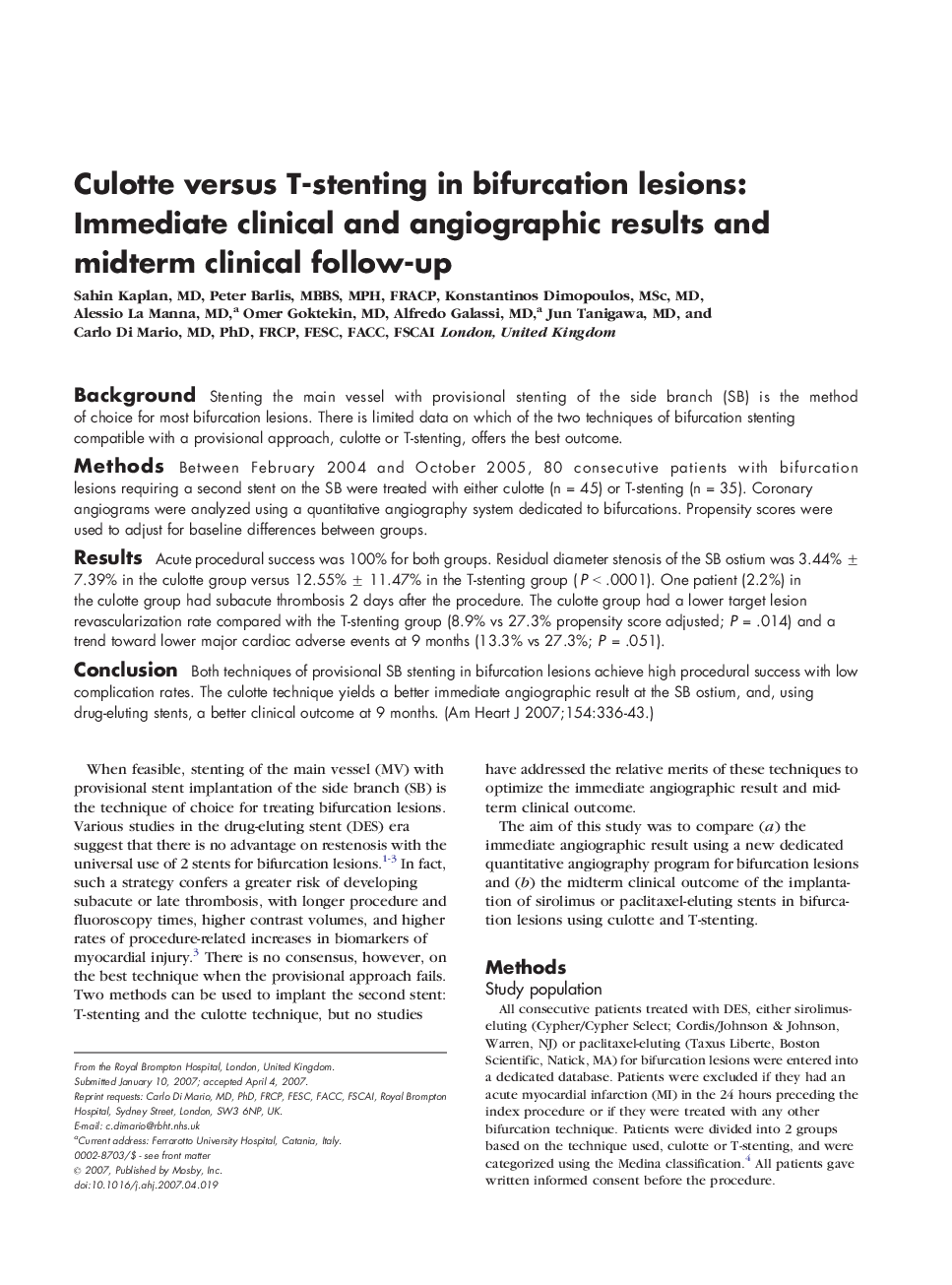| Article ID | Journal | Published Year | Pages | File Type |
|---|---|---|---|---|
| 2851543 | American Heart Journal | 2007 | 8 Pages |
BackgroundStenting the main vessel with provisional stenting of the side branch (SB) is the method of choice for most bifurcation lesions. There is limited data on which of the two techniques of bifurcation stenting compatible with a provisional approach, culotte or T-stenting, offers the best outcome.MethodsBetween February 2004 and October 2005, 80 consecutive patients with bifurcation lesions requiring a second stent on the SB were treated with either culotte (n = 45) or T-stenting (n = 35). Coronary angiograms were analyzed using a quantitative angiography system dedicated to bifurcations. Propensity scores were used to adjust for baseline differences between groups.ResultsAcute procedural success was 100% for both groups. Residual diameter stenosis of the SB ostium was 3.44% ± 7.39% in the culotte group versus 12.55% ± 11.47% in the T-stenting group (P < .0001). One patient (2.2%) in the culotte group had subacute thrombosis 2 days after the procedure. The culotte group had a lower target lesion revascularization rate compared with the T-stenting group (8.9% vs 27.3% propensity score adjusted; P = .014) and a trend toward lower major cardiac adverse events at 9 months (13.3% vs 27.3%; P = .051).ConclusionBoth techniques of provisional SB stenting in bifurcation lesions achieve high procedural success with low complication rates. The culotte technique yields a better immediate angiographic result at the SB ostium, and, using drug-eluting stents, a better clinical outcome at 9 months.
